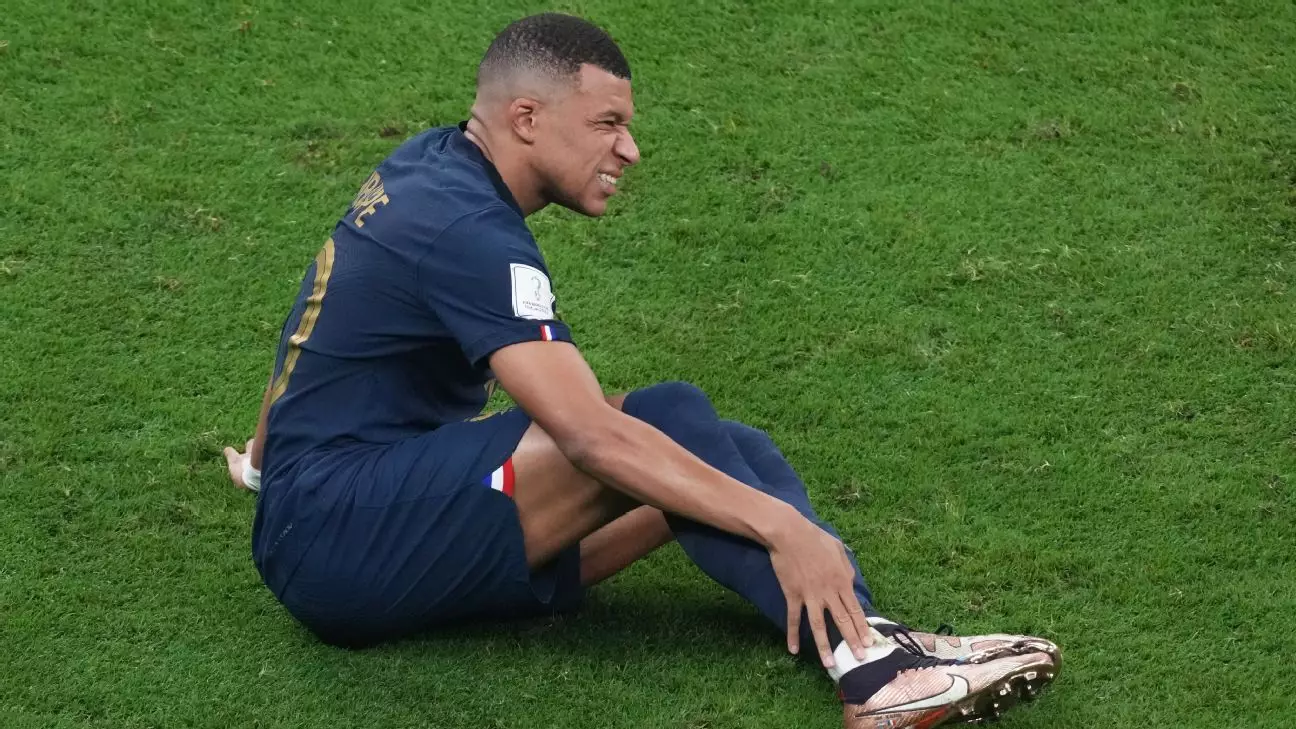The mid-season World Cup held in Qatar last year had a profound impact on the well-being of players from Europe’s top five football leagues. According to a study conducted by insurance group Howden, players experienced a significant increase in the number of days they were sidelined due to injuries in the months following the tournament. This article delves into the findings of the study and explores the implications of fixture congestion on player welfare.
The study revealed a striking contrast in the duration of player injuries before and after the mid-season World Cup. Prior to the tournament, 88 recorded injuries led to an average of 11.35 days of player absence. However, following the tournament, this figure rose to a staggering 19.41 days in January 2023. Certain types of injuries saw a particularly drastic increase in severity, with ankle injuries soaring by 170%, calf/shin injuries by 200%, and hamstring injuries by 130%. These findings highlight the detrimental impact of the World Cup on the physical well-being of players from Europe’s top leagues.
The increased severity of injuries caused by the mid-season World Cup had a direct impact on the financial landscape of European football. Howden’s study indicates that the financial burden of injuries rose by nearly 30%, from €553.62 million ($603.83 million) to €704.89 million ($768.93 million), across the top five leagues. The significant rise in injury-related expenses is a cause for concern among clubs, as it directly affects their financial stability and resources. It is clear that the staging of the World Cup in a European winter season has wide-ranging consequences beyond player welfare.
The impact of the mid-season World Cup was felt uniformly across various domestic leagues, including the English Premier League and the German Bundesliga. Both leagues witnessed a substantial increase in injury rates following the tournament. Prior to the World Cup, the English Premier League had 23.6% of its players participating in the tournament, while the Bundesliga had 14.8%. Post-World Cup, Bundesliga players suffered 46 injuries in the two months following the tournament, compared to 49 injuries in the English Premier League. Interestingly, this suggests that the extended winter break in Germany had a minimal effect on injury rates. These findings shed light on the differences in league structures and their potential impact on player welfare during fixture-congested seasons.
In addition to the physical toll, the mid-season World Cup also took a toll on the mental well-being of players. According to FIFPRO, the international players’ union, nearly half of the players participating in the World Cup experienced extreme or increased mental fatigue during an unprecedented season of fixture congestion. Approximately 44% of players experienced heightened physical fatigue, while 23% reported increased levels of mental fatigue in January compared to previous seasons. The study also found that 53% of players felt a heightened likelihood of suffering injuries. These findings underline the need for clubs and football governing bodies to prioritize the mental health of players amidst the demanding international football calendar.
The mid-season World Cup in Qatar had far-reaching consequences on player welfare across Europe’s top football leagues. The study conducted by Howden highlights the increase in injury severity and the subsequent financial implications faced by clubs. The varying impact on domestic leagues and the detrimental effects on players’ mental health serve as crucial indicators for the need to address fixture congestion and ensure the overall well-being of footballers. It remains imperative for governing bodies, clubs, and other stakeholders in football to collaborate and find solutions that prioritize player welfare without compromising the excitement and accessibility of the sport.
